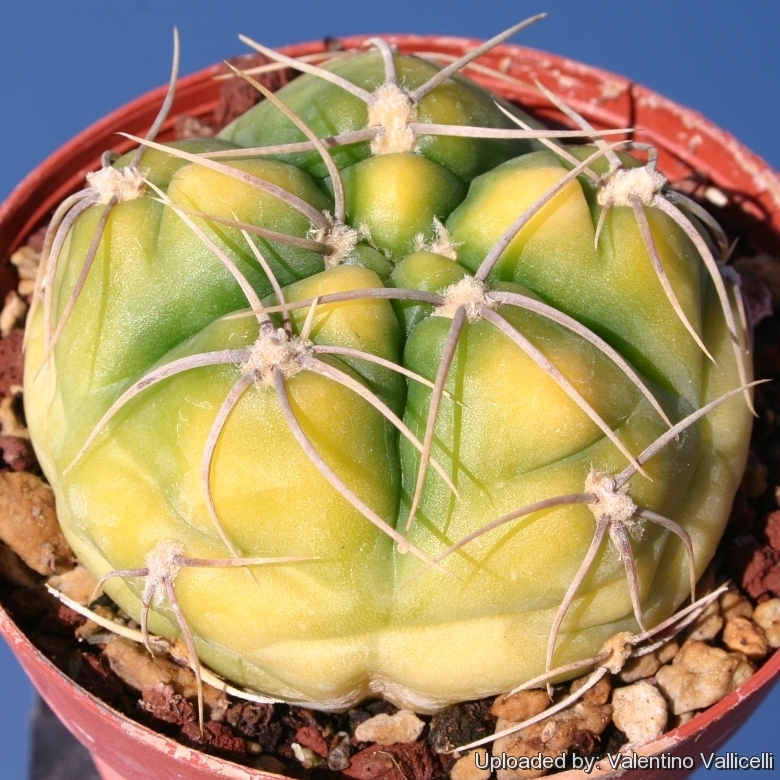
Gymnocalycium deeszianum cv. Yellow Sunshine Photo by: Valentino Vallicelli
Origin and Habitat: Garden origin (Nursery produced cultivar)
Synonyms:
See all synonyms of Gymnocalycium deeszianum
back
Accepted name in llifle Database:Gymnocalycium deeszianum DölzKakteenkunde (unnumbered volume) 1943, 54 (1943); cf. Gray Herb. Card Cat.
Cultivars
(1):
back
Description: The normal Gymnocalycium deeszianumSN|15883]]SN|15883]] is a small globose solitary cactus and the variegated form here described only differs from the standard form for the odd yellowish colour of epidermis. The yellow appearance of this Gymnocalycium is more precisely caused by an aberration called "schizochromism". Here, though, the specific green pigment (chlorophyll) is partially missing, every other pigment is present at normal levels, the dominant green colouration is lost, but will still more than likely have normal other pigments that give the yellow overall appearance of stems. The yellow colour of this plant is transmitted from the parent to the offspring and this plant is reproduced by seeds.
Stem: Up to 6,5 cm tall, 8-10 cm in diameter, globose, flattened to elongate, light olive green with diffused yellow fading, becoming a pleasant pale yellowish-green.
Ribs: Rounded, slightly chinned.
Radial spines: Spreading, straight to more or less curved and bent against the stem. Creamy yellowish with darker tips.
Central spines: 0-1 (Often absent).
Flowers: Pale pink or (usually) pure white.
Subspecies, varieties, forms and cultivars of plants belonging to the Gymnocalycium deeszianum group
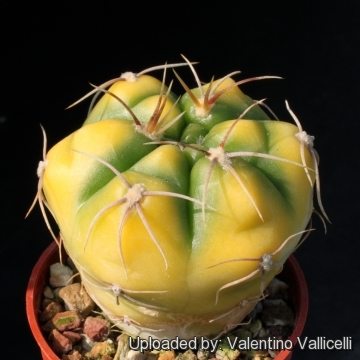 Gymnocalycium deeszianum cv. Yellow Sunshine Photo by: Valentino Vallicelli
Gymnocalycium deeszianum cv. Yellow Sunshine Photo by: Valentino Vallicelli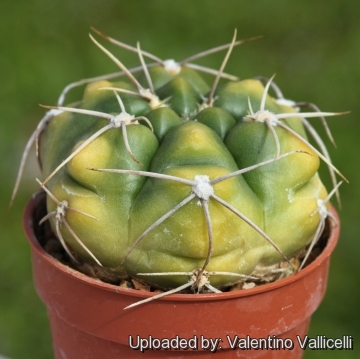 Gymnocalycium deeszianum cv. Yellow Sunshine Photo by: Valentino Vallicelli
Gymnocalycium deeszianum cv. Yellow Sunshine Photo by: Valentino Vallicelli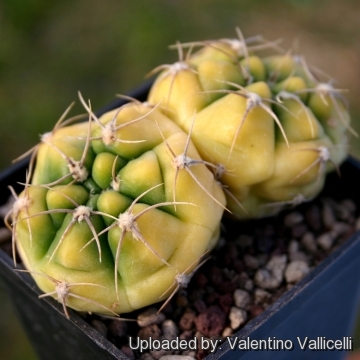 Gymnocalycium deeszianum cv. Yellow Sunshine Photo by: Valentino Vallicelli
Gymnocalycium deeszianum cv. Yellow Sunshine Photo by: Valentino Vallicelli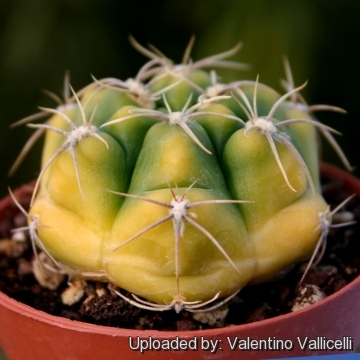 Gymnocalycium deeszianum cv. Yellow Sunshine Photo by: Valentino Vallicelli
Gymnocalycium deeszianum cv. Yellow Sunshine Photo by: Valentino Vallicelli Gymnocalycium deeszianum cv. Yellow Sunshine Photo by: Valentino Vallicelli
Gymnocalycium deeszianum cv. Yellow Sunshine Photo by: Valentino Vallicelli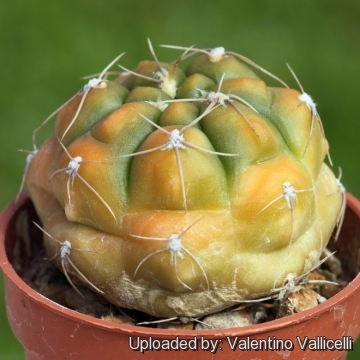 Gymnocalycium deeszianum cv. Yellow Sunshine Photo by: Valentino Vallicelli
Gymnocalycium deeszianum cv. Yellow Sunshine Photo by: Valentino VallicelliCultivation and Propagation: This is a species that offers no cultivation difficulties. It is a summer grower that enjoy some shade during the hottest part of the day. Water regularly in summer (but do not over-water). Keep rather dry in winter. Feed with a high potassium fertilizer in summer. Hardy as low as -5° C (or less) if kept dry.
Propagation: Direct sow after last frost or cuttings, but seldom produces offsets.
















